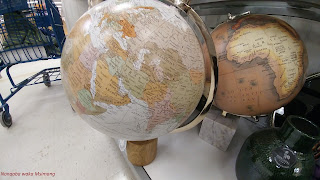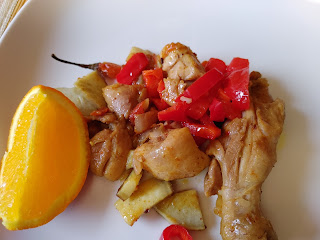Globes and Combatting Racism
The world map is a great Christmas gift for many reasons. Globes eliminate that destructive word ‘mine, it’s mine’ because parents, cousins and brothers and sisters can share it, calling out countries of the world and their languages.
A globe is a circle, like the sun and the moon, which makes it a tool that can be used to illustrate other school subjects. It can also be used to teach anti-racism because the home can be a breeding ground for hatred.
For example, kids should be encouraged to identify Japan, Korea, Vietnam and China, on the globe thus teaching them that saying ‘he looks Chinese’ is wrong.
Parents already have some strategies for raising kids to understand that Canada is a garden with many different flowers.
A globe at home is an effective tool to re-inforce all of the above by playing different games. For example, kids can be asked to close their eyes and point a finger on any part of the globe.
Take Ukraine for example. What is the country’s biggest city? Neighbours? Does it share borders with other countries? Is it near an ocean? Is it an island?
How about languages? That is a tricky one because globes don’t list languages. That is when parents step up to the plate and suggest a visit to the Ukrainian Community Centre.
The visit is an anti-racism strategy which allows kids to interact with human beings, Ukrainians who live in Canada. Therefore, going to Google or Yahoo defeats the purpose.
CAUTION: It is assumed that it is people who have been in Canada and the U.S. longer that are the problem. Far from it.

Some new immigrants themselves come with an attitude of religious and cultural superiority and mouth racist comments about black people, First Nations (indigenous people) how women dress and women’s unrestricted independence, in general.
Therefore combating racism is a two-way street, and studying the various shades of the world map is one way of reaching that goal.
By: Nonqaba waka Msimang, author of Sweetness, a South African novel.
A globe is a circle, like the sun and the moon, which makes it a tool that can be used to illustrate other school subjects. It can also be used to teach anti-racism because the home can be a breeding ground for hatred.
For example, kids should be encouraged to identify Japan, Korea, Vietnam and China, on the globe thus teaching them that saying ‘he looks Chinese’ is wrong.
Parents already have some strategies for raising kids to understand that Canada is a garden with many different flowers.
l Attending annual festivals of other cultures
l Eating out in different restaurants
l Trying out world recipes at home
l Attending foreign film festivals in their city
l Telling kids that, ‘I’m reading an interesting book, the author grew up in Singapore.’
l Telling kids their grandparents’ story of why they came to Canada
l Encouraging kids to listen patiently to new immigrant stories
l Encouraging kids to pronounce classmates’ names correctly
A globe at home is an effective tool to re-inforce all of the above by playing different games. For example, kids can be asked to close their eyes and point a finger on any part of the globe.
Take Ukraine for example. What is the country’s biggest city? Neighbours? Does it share borders with other countries? Is it near an ocean? Is it an island?
How about languages? That is a tricky one because globes don’t list languages. That is when parents step up to the plate and suggest a visit to the Ukrainian Community Centre.
The visit is an anti-racism strategy which allows kids to interact with human beings, Ukrainians who live in Canada. Therefore, going to Google or Yahoo defeats the purpose.
CAUTION: It is assumed that it is people who have been in Canada and the U.S. longer that are the problem. Far from it.

Some new immigrants themselves come with an attitude of religious and cultural superiority and mouth racist comments about black people, First Nations (indigenous people) how women dress and women’s unrestricted independence, in general.
Therefore combating racism is a two-way street, and studying the various shades of the world map is one way of reaching that goal.
By: Nonqaba waka Msimang, author of Sweetness, a South African novel.




Comments